5 Alternatives to Obsidian for Journaling and Note-taking
By Gregor K. published about 2023-02-01 20:15:27
If you're looking for an alternative to the popular note-taking app Obsidian, then you're in luck! This article is here to provide you with a list of similar websites like Obsidian that you can use to take and organize your notes. These websites offer rich text editing, markdown formatting, and other features that Obsidian users will appreciate. So, read on to discover the top picks for Obsidian alternatives!
Obsidian
Obsidian is a powerful knowledge base that works on local Markdown files and helps you to organize your notes and information. It’s built around the concept of graphs and building blocks, so you can easily link your notes together and explore them in an intuitive way.
Features
- Graph-based structure to link notes together
- Easy to use and intuitive user interface
- Syntax highlighting and support for advanced Markdown
- Flexible folder structure for organizing notes
- Search and full-text search for quickly finding notes
- Support for plugins and customizations
Table of Contents
- 1Introduction
- 2Obsidian Alternatives
-
3Head-to-Head Comparisons
- 3.1Obsidian vs Anki
- 3.2Obsidian vs WorldAnvil
- 3.3Obsidian vs Notion
- 3.4Obsidian vs Asana
- 3.5Obsidian vs Athens
- 3.6Obsidian vs Black
- 3.7Obsidian vs ClickUp
- 3.8Obsidian vs Synergy
- 3.9Obsidian vs cPanel
- 3.10Obsidian vs Google Docs
- 3.11Obsidian vs Dropbox
- 3.12Obsidian vs Evernote
- 3.13Obsidian vs Keep
- 3.14Obsidian vs GitHub
- 3.15Obsidian vs Google
- 3.16Obsidian vs Jet
- 3.17Obsidian vs Jasper
- 3.18Obsidian vs Keep
- 3.19Obsidian vs Miro
- 3.20Obsidian vs OneNote
- 4Obsidian History
- 5Obsidian Status
- 6Comments
- 7Further Links
Obsidian Alternatives
WorkFlowy
Both are note taking applications offering organizational tools and outlining, tagging and searching capabilities.
Obsidian has a built-in markdown editor while WorkFlowy does not.
OneNote
Both provide note taking applications with organizational and outlining tools.
Obsidian offers markdown editing capabilities while OneNote does not.
Evernote
Both provide note taking applications with organizational and outlining tools.
Obsidian offers markdown editing capabilities while Evernote does not.
Bear
Both offer note taking applications with organizational and outlining tools.
Obsidian offers markdown editing capabilities while Bear does not.
Notion
Both provide note taking applications with organizational and outlining tools.
Obsidian offers markdown editing capabilities while Notion does not.
Todoist
Both provide note taking applications with organizational and outlining tools.
Obsidian offers markdown editing capabilities while Todoist does not.
Trello
Both provide note taking applications with organizational and outlining tools.
Obsidian offers markdown editing capabilities while Trello does not.
Anki
Both Obsidian and Anki are digital tools that help organize information.
Obsidian is a tool for creating and managing notes, while Anki is a tool for memorization and learning.
WorldAnvil
Both Obsidian and WorldAnvil are websites dedicated to helping users create, organize and store their worldbuilding content.
Obsidian is focused on a much more streamlined and minimalistic approach to creating knowledge bases, while WorldAnvil offers a wider range of features and tools for a more interactive experience.
Asana
Both Obsidian and Asana are software applications designed to help increase productivity and streamline task management.
Obsidian is a markdown-based note-taking application, whereas Asana is a project management platform for team collaboration.
Athens
Both Obsidian and Athens are knowledge management tools for teams.
Obsidian is a decentralized, open-source platform powered by Markdown, while Athens is a centralized, proprietary platform powered by HTML.
Black
Both websites feature black as their primary color.
Obsidian is designed for task management, while Black is dedicated to creating custom web applications.
ClickUp
Both Obsidian and ClickUp are task management software programs used to organize and manage tasks.
Obsidian is a knowledgebase system that allows users to create and store notes, while ClickUp offers more advanced features such as time tracking, Gantt charts, and task automation.
Synergy
Both Obsidian and Synergy are websites for personal task management.
Obsidian is a markdown-based note-taking platform, while Synergy is a project management platform with integrated chat and file sharing.
Obsidian Head-To-Head
Obsidian is a great note-taking application that can help keep all of your thoughts, notes, and ideas organized. It is currently being compared to other websites such as Evernote, OneNote, and Apple Notes to determine which note-taking application is the best for the user's needs. In this article, we will be exploring the features and technologies of Obsidian compared to other websites in order to determine which one provides the best experience. We will be looking at things such as ease of use, security features, cost, and more. By the end of this article you should have a better understanding of which website best meets your own personal needs based upon your own preferences.
Obsidian and Anki are two specialized note-taking applications designed to help users organize their information in a way that works best for them. Obsidian is an open-source platform that allows users to store notes and connect related notes together with links, while Anki offers users the ability to create flashcards, review difficult concepts, and track progress over time. Obsidian's unique feature is its graph view, which allows users to visualize their notes as a network of interconnected ideas. It also includes features like searchable tags, rich text formatting, automatic backups, and powerful Markdown support. Additionally, Obsidian supports plugins that can add extra functionality such as code highlighting and image previews. Anki's main feature is its spaced repetition algorithm. This algorithm enables users to review material at optimal intervals by tracking how well they remember each concept and re-presenting it accordingly. It also provides the ability for users to create customized decks of cards with images or audio clips attached. Additionally, Anki has an online community where users can share study materials and find other helpful resources.
Obsidian and World Anvil are two websites that offer tools to help with worldbuilding. Both have a vast range of features, but there are some feature differences between the two. Obsidian is focused on providing a collaborative workspace for worldbuilding projects, allowing users to create and share any kind of content related to their worlds in one place. It includes features such as mind mapping, timeline views, character sheets and relationship maps. It also offers integrations with other services like Roll20 and Discord. World Anvil focuses more on narrative tools, offering a platform for creating articles about characters, locations, cultures and more. It includes features such as article templates for different types of content, a searchable database for all the userâs content, as well as drag-and-drop interfaces for creating custom maps. It also provides tools for managing campaigns and tracking progress through quests. Both platforms provide comprehensive toolsets designed to make worldbuilding easier. However, Obsidian is better suited to collaboration while World Anvil is better suited to storytelling.
Obsidian and Notion are two popular note-taking applications that can be used to organize notes, documents, tasks, and other content. Both allow users to easily create collections of documents that can be linked together. The biggest difference between Obsidian and Notion lies in their approaches to note taking. Obsidian emphasizes linking between documents, making it ideal for creating networks of ideas and taking notes on a variety of topics. Notion is focused on structure, with a more rigid approach that allows users to quickly organize information into databases and tables. In terms of collaboration, both applications have the ability to share documents with other users and make changes in real time. However, Obsidian also allows multiple people to work on the same document simultaneously while Notion does not offer this feature. Notion also has features such as Kanban boards, calendars, and wikis which may be helpful for organizing projects or tasks but are not available in Obsidian. On the other hand, Obsidian offers features such as visualization tools for creating mind maps and graphs which are not available in Notion. Overall, both applications offer unique features that appeal to different types of users depending on their preferences and needs.
Obsidian and Asana are both task management software systems designed to help individuals and teams stay organized and collaborate more effectively. Both have similar features such as drag-and-drop functionality, collaborative editing, and integration with other applications. Obsidian allows users to create notes and link them together in a network of "knowledge graphs". It also has a powerful search tool that can quickly locate related topics across multiple notes. The platform integrates with third-party apps such as Dropbox, Google Drive, and Evernote. Asana provides a visual interface for creating tasks, assigning due dates and owners, setting priorities, tracking progress, and setting deadlines. It also includes project templates to help teams get started quickly. In addition to its own native tools, Asana can integrate with other applications like Slack or Zoom to facilitate communication between team members. Asana also has advanced reporting capabilities so users can track their performance over time.
Obsidian and Athens are two popular software development tools that offer similar features and capabilities. Obsidian is a powerful note-taking application designed to help developers quickly capture their ideas in an organized, easy-to-manage environment. It offers various features for taking notes, such as hierarchical tags, intuitive search, and markdown support. Athens is a code review platform geared towards helping developers collaborate on code changes through peer review. It provides tools for tracking pull requests, diffs, code reviews, issue management and more. Both tools have powerful search capabilities and offer integrations with popular tools like GitHub and Slack. However, Athens also provides project management capabilities such as issue tracking and time tracking that are not available in Obsidian.
Obsidian and Black are websites that offer a variety of services for businesses, such as website building and hosting, ecommerce solutions, and customer support. Both sites provide features designed to help business owners create an effective digital presence. Obsidian offers a website builder with a drag-and-drop function that allows users to quickly build pages and customize content. Users can also access preset designs and add a store with online payment options. Additionally, Obsidian provides hosting services with unlimited bandwidth and storage space, along with email accounts and SSL certificates. Black offers a range of tools that allow users to customize their website design, including customizable templates, web fonts, themes, and more. It also includes an online store builder with integrated payment processing options. Additionally, Blackâs hosting services come with daily backups, secure servers, unlimited traffic capacity, and 24/7 customer support.
Obsidian and ClickUp are both popular project management websites that allow users to create and manage tasks, store documents, track progress and collaborate with others. Both websites offer a wide range of features that allow users to customize their workflows. Obsidian offers an easy-to-use interface with customizable boards and lists. It also allows users to create notes, embed images and videos, share files/links and assign tasks to team members. Additionally, Obsidian offers advanced reporting options such as custom reports, date range filters, tag summaries and more. ClickUp also provides a user-friendly interface with customizable workspaces, tasks lists and boards. It also has features like project templates, Gantt charts for tracking timelines and task dependencies, automated reminders for overdue or upcoming tasks, comment threads for discussions on projects etc. Additionally, ClickUp offers real-time activity feeds which help users stay updated about their teamâs progress. Overall, both Obsidian and ClickUp offer powerful project management tools that can be tailored to fit the needs of any team or organization.
Obsidian and Synergy are both powerful software tools used for project management and collaboration. Obsidian is a comprehensive tool that provides users with an all-in-one platform for organizing projects and collaborating with team members. It has a wide range of features, including task management, online document editing, conversation threads, project templates, user accounts and access rights, custom views, and notifications. Synergy is a cloud-based solution designed to streamline collaboration by connecting people with the right information at the right time. It offers features such as task tracking, resource planning, file sharing, real-time messaging and document storage. Additionally, it offers integration with popular third-party applications like Microsoft Office 365 and Google Drive. Both solutions offer robust reporting capabilities to help teams track progress on projects. However, Obsidian differentiates itself in that its user interface is highly intuitive and customizable while Synergy's UI is more straightforward but less flexible.
Obsidian and cPanel are two popular hosting control panels used to manage websites. Obsidian is a modern, open source panel that provides users with an intuitive, easy-to-use interface. It includes features such as drag-and-drop functionality, automatic domain configuration, and a built-in website builder. cPanel is also an intuitive panel but it has been around for longer than Obsidian. cPanel includes features such as built-in email account management, webmail access, and various security features. Both panels provide users with an easy way to manage their websites but Obsidian does have the advantage of being more modern and user friendly for those who do not have a lot of technical knowledge or experience.
Obsidian and Google Docs are both powerful tools for note-taking, document creation, and collaboration. Obsidian is a desktop application that allows users to create notes in markdown format and organize them in an intuitive graph view. It offers version control, a feature that allows users to track their changes over time, as well as support for a range of plugins. Google Docs is an online document editor that enables real-time collaboration with up to 100 people at once. It also offers the ability to share documents publicly or privately and includes features such as chat and commenting capabilities. Both tools provide the ability to store documents in the cloud and can be used across multiple devices. Ultimately, while they have different strengths, either tool can be used effectively depending on individual needs.
Obsidian and Dropbox are both cloud storage solutions that provide users with the ability to securely store and share digital files. With Obsidian, users can store, manage, and access their files from any device as it is a fully-featured cloud storage platform. It also allows for collaboration between different users and offers advanced security features like two-factor authentication. Dropbox, on the other hand, is more focused on providing simple file sharing between different users. It does not offer the same level of security as Obsidian, but its user interface makes it easier for new users to navigate and use. Both services provide quick access to stored files from anywhere in the world, though Obsidianâs advanced features make it better suited for businesses or organizations that need extra layers of security or frequent collaboration between people.
Obsidian and Evernote are both powerful tools for note-taking and organizing ideas. Both offer a wide range of features that allow users to store, organize, and access their ideas quickly and easily. Obsidian is a free, open source markdown editor that allows users to create notes, links, images, and other content in an organized way. It helps users connect related pieces of information. The app also offers many advanced features such as syntax highlighting, task lists, spell checker, and more. It also has plugins for extra functionality such as website previews or a distraction-free mode. Evernote is a comprehensive note-taking platform with numerous features to help you stay organized. It allows you to store text notes, photos, audio notes, webpages and more in one place. It also provides collaboration tools for sharing notes with others. Evernote has powerful search capabilities so users can quickly find any piece of information they need from their vast repositories of data. It also has automation features such as reminders or scheduling so you can keep your workflow efficient.
Obsidian and Google Keep are both note-taking apps that allow users to store text, images, and even audio recordings. Both applications offer a range of features to help users keep their notes organized and easy to find. Google Keep is primarily web-based and allows users to access notes from multiple devices. It offers basic editing functions, such as labels and color tags, as well as the ability to easily share notes with others. Additionally, it allows for voice commands in multiple languages and has an integrated reminders function. Obsidian is a more powerful desktop application than Google Keep. It provides a range of features designed to help users create rich documents and organize them into knowledge graphs. It also allows for Markdown formatting, version control, graphical linking between notes, collaboration features, and plugins for additional customization.
Obsidian and GitHub are both powerful tools for managing projects, sharing resources, and collaboration. Both offer a variety of features that make project management and collaboration more efficient. Obsidian is a markdown editor specifically designed for knowledge organization and note-taking. It allows you to link notes together with simple shortcuts, create content in an organized manner, embed images and code snippets, and embed external content from webpages. It also has features such as version control, export to various formats (HTML, PDF, DOCX), and automatic backups. GitHub is an online platform designed for software development projects. It offers repository hosting services, issue tracking systems, bug tracking systems, code review tools, wiki integration capabilities, and more. Additionally, it offers open source project hosting with powerful collaboration tools such as pull requests and code reviews that can be used across different platforms. With GitHubâs integrations with other applications like Slack or Trello, teams can easily manage tasks and deadlines in one place. Ultimately both Obsidian and GitHub are great tools for project management depending on the needs of the team or individual user. Depending on the size of the project or requirements of the team/individual user different solutions may provide better results so users should evaluate their needs before deciding which tool is right for them.
Obsidian and Google are both powerful tools that can help users organize their data. With Obsidian, users can create a wiki-like network of notes, links, and documents to better connect their thoughts. This allows them to easily build knowledge graphs and timelines while also allowing them to access information quickly. With Google, users have access to a wide range of features including search functionality, document editing tools, web hosting services, and cloud storage. While Obsidian has similar search capabilities as Google, it doesnât offer the same level of comprehensive features. On the other hand, Google does not provide the same level of flexibility and customization that Obsidian does with its note taking capabilities. Ultimately, both websites offer great solutions for organizing data but depending on the userâs needs one may be more suitable than the other.
Obsidian and Jet are both project and task management software options. Both offer the same basic project management features, including task scheduling, resource allocation, managing team collaboration, and customizable reports. Obsidian also offers kanban boards and automation workflows which can be used to streamline processes within a project. Jet provides its users with an analytics dashboard which gives them the ability to analyze data related to their projects. Jet also allows users to create custom workflows in addition to the standard ones that come with the platform. The main difference between Obsidian and Jet is the focus on customization; while Jet allows for more customization options than Obsidian does, Obsidian provides a wide range of features that can be tailored for specific needs.
Obsidian and Jasper are two popular website building platforms. Obsidian is an open source platform that allows users to create their own websites with minimal technical knowledge. It offers drag and drop elements, simple forms, and customizable layouts. In addition, it has a built-in content management system (CMS) to help manage the content on your website. Jasper is also a website building platform, but it provides more advanced features such as custom CSS and JavaScript coding capabilities as well as an integrated eCommerce platform for creating online stores. Both platforms offer a wide range of themes and templates to choose from, making it easy to create a unique look for any website. However, Jasper's advanced features may be better suited for those with more experience in web development.
Obsidian and Keep are two password management applications that help users securely store and access their passwords. Both applications offer a convenient way to organize and store passwords, with Obsidian offering a local, client-side application while Keep runs an online platform. Obsidian offers a variety of features for managing passwords, including the ability to generate strong passwords, tag them for easy organization, and share them with other users. It also provides secure storage of sensitive information such as bank accounts or credit cards. In contrast, Keep offers standard features for storing passwords such as auto-fill capabilities, but does not have the same level of customization or flexibility as Obsidian. In terms of security, both applications provide robust encryption to protect user data. However, Obsidianâs local-only solution provides an additional layer of protection against potential data breaches that an online service cannot offer. Additionally, both apps provide two-factor authentication to ensure secure access to user accounts. Overall, Obsidian and Keep are both great options for storing and managing passwords in a secure environment. While they offer similar core features, they differ in terms of customization options and security measures which may be better suited depending on individual preferences and needs.
Obsidian and Miro are both digital whiteboard collaboration tools that allow teams to share ideas, plan projects, and collaborate together in real-time. Obsidian offers a variety of features such as customizable backgrounds, private and public boards, a built-in chat feature, audio/video conferencing capability, the ability to embed documents from other platforms like Google Drive, and smooth integration with third-party applications. It also has a drag-and-drop interface for easy task management. Miro provides an interactive workspace with advanced features like virtual sticky notes, image annotation tools, dynamic timelines for project planning, multiple view modes for visualizing data, and an AI-powered search engine. It also allows users to create custom templates or use existing ones provided by the platform. Additionally, it supports integrations with popular web applications like Dropbox and Google Drive as well as various plug-ins such as Jira and Slack.
Obsidian and OneNote are two note-taking applications that can help users organize their thoughts and ideas. Both applications provide users with a range of features to help make note-taking easier. Obsidian is a powerful markdown editor that allows users to create notes, link them together, and work collaboratively on projects. Its âgraph viewâ feature provides an overview of all the connected notes in the workspace, allowing for quick navigation and organisation. It also offers advanced features such as version control, plugin support, search integration, and encryption for security. OneNote is a cloud-based note taking application from Microsoft with basic note-taking features such as formatted text, images, tables and links. It also has collaboration tools such as shared notebooks and real-time co-authoring to allow multiple people to work on projects together in one place. OneNote also offers audio/video recording capabilities, along with digital handwriting recognition.
History of Obsidian
Obsidian is a website that was created in 2018. It began as a note-taking and knowledge management application, but has since expanded to include task management and collaboration features. The website has grown rapidly over the years, becoming a popular tool for organizing and sharing information among teams. It has also been recognized for its user-friendly design, making it one of the most popular knowledge and task management tools on the market.
Obsidian Status
The Obsidian website on online and reachable (last checked on 2025-07-14 01:00:56).
Comments
-
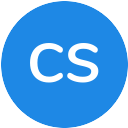
-

-
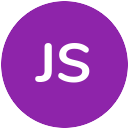
-
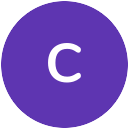
-

-
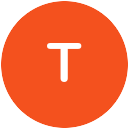
-

-

-
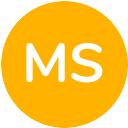
-
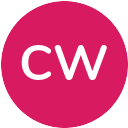
I'm so glad I stumbled across this list, it's like obsidian in the rough!
2024-12-23 18:19:22 ·
Further Links
Trending Sites
Top Sites in Productivity
Top Sites in Organization
Top Sites in Time Management
Top Sites in Outlining
Obsidian
Obsidian is a powerful knowledge base that works on local Markdown files and helps you to organize your notes and information. It’s built around the concept of graphs and building blocks, so you can easily link your notes together and explore them in an intuitive way.
Features
- Graph-based structure to link notes together
- Easy to use and intuitive user interface
- Syntax highlighting and support for advanced Markdown
- Flexible folder structure for organizing notes
- Search and full-text search for quickly finding notes
- Support for plugins and customizations
Table of Contents
- 1Introduction
- 2Obsidian Alternatives
-
3Head-to-Head Comparisons
- 3.1Obsidian vs Anki
- 3.2Obsidian vs WorldAnvil
- 3.3Obsidian vs Notion
- 3.4Obsidian vs Asana
- 3.5Obsidian vs Athens
- 3.6Obsidian vs Black
- 3.7Obsidian vs ClickUp
- 3.8Obsidian vs Synergy
- 3.9Obsidian vs cPanel
- 3.10Obsidian vs Google Docs
- 3.11Obsidian vs Dropbox
- 3.12Obsidian vs Evernote
- 3.13Obsidian vs Keep
- 3.14Obsidian vs GitHub
- 3.15Obsidian vs Google
- 3.16Obsidian vs Jet
- 3.17Obsidian vs Jasper
- 3.18Obsidian vs Keep
- 3.19Obsidian vs Miro
- 3.20Obsidian vs OneNote
- 4Obsidian History
- 5Obsidian Status
- 6Comments
- 7Further Links
